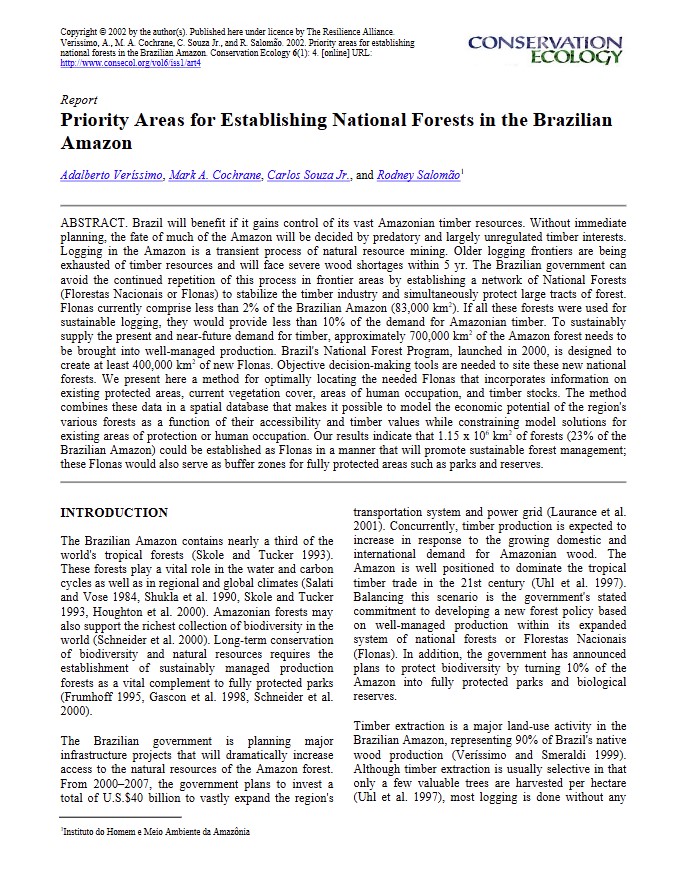Veríssimo, A., Cochrane, M. A., Souza, C., & Salomão, R. (2002). Priority Areas for Establishing National Forests in the Brazilian Amazon. Conservation Ecology, 6(1). http://www.jstor.org/stable/26271848
Brazil will benefit if it gains control of its vast Amazonian timber resources. Without immediate planning, the fate of much of the Amazon will be decided by predatory and largely unregulated timber interests. Logging in the Amazon is a transient process of natural resource mining. Older logging frontiers are being exhausted of timber resources and will face severe wood shortages within 5 yr. The Brazilian government can avoid the continued repetition of this process in frontier areas by establishing a network of National Forests (Florestas Nacionais or Flonas) to stabilize the timber industry and simultaneously protect large tracts of forest. Flonas currently comprise less than 2% of the Brazilian Amazon (83,000 km2). If all these forests were used for sustainable logging, they would provide less than 10% of the demand for Amazonian timber. To sustainably supply the present and near-future demand for timber, approximately 700,000 km2 of the Amazon forest needs to be brought into well-managed production. Brazil’s National Forest Program, launched in 2000, is designed to create at least 400,000 km2 of new Flonas. Objective decision making tools are needed to site these new national forests. We present here a method for optimally locating the needed Flonas that incorporates information on existing protected areas, current vegetation cover, areas of human occupation, and timber stocks. The method combines these data in a spatial database that makes it possible to model the economic potential of the region’s various forests as a function of their accessibility and timber values while constraining model solutions for existing areas of protection or human occupation. Our results indicate that 1.15 x 106 km2 of forests (23% of the Brazilian Amazon) could be established as Flonas in a manner that will promote sustainable forest management; these Flonas would also serve as buffer zones for fully protected areas such as parks and reserves.

